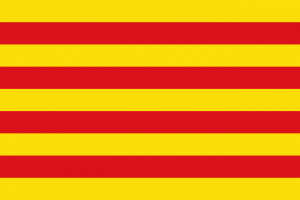Language/Catalan/Grammar/Noun-Gender-and-Plurals
Catalan is a Romance language spoken in Catalonia by approximately 10 million speakers. Like most Romance languages, Catalan has grammatical gender, which means that nouns are classified as masculine or feminine. In this lesson, we will learn more about noun gender and plurals in Catalan to help you expand your vocabulary and improve your sentence-building skills.
Consider broadening your understanding by checking out these related lessons: Conditional and future tenses & Basic Sentence Structure.
Noun Gender
In Catalan, nouns are classified as masculine or feminine. The gender of most nouns can be determined by their endings. Here are the most common endings for masculine and feminine nouns:
Masculine Nouns
- -o: el gat (the cat)
- -or: el professor (the professor)
- -er: el coixer (the cook)
- -ista: el turista (the tourist)
- -e: el llapis (the pencil)
- -u: el fill (the son)
Feminine Nouns
- -a: la gata (the cat)
- -ció: la nació (the nation)
- -tat: la veritat (the truth)
- -tud: la salut (the health)
- -ia: la fira (the fair)
- -té: la llibertat (the liberty)
It is important to note that there are exceptions to these rules, and not all nouns follow this pattern. There are also some nouns that have the same form for both masculine and feminine gender, such as "la persona" (the person).
To determine the gender of a noun, you can use the article:
- El: masculine singular (el gat)
- La: feminine singular (la gata)
- Els: masculine plural (els gats)
- Les: feminine plural (les gates)
Now that we have learned the basics of noun gender, let's move on to forming plurals.
Plurals
In Catalan, nouns form plurals by adding -s to the end of the word for most nouns. Here are some examples:
- El gat (the cat) -> els gats (the cats)
- La casa (the house) -> les cases (the houses)
- El fill (the son) -> els fills (the sons)
However, there are some exceptions to this rule. Here are some examples of irregular plurals:
- El braç (the arm) -> els braços (the arms)
- La flor (the flower) -> les flors (the flowers)
- El peu (the foot) -> els peus (the feet)
Some common irregular plurals that you should remember are:
- el germà (the brother) -> els germans (the brothers)
- la mare (the mother) -> les mares (the mothers)
- el cavall (the horse) -> els cavalls (the horses)
- la paraula (the word) -> les paraules (the words)
To form the plural of a noun that ends in -s or -x, add -os to the end of the word:
- El got (the glass) -> els gots (the glasses)
- El llapis (the pencil) -> els llapisos (the pencils)
Note that when a noun ends in -ch or -g, you need to add -os to the end of the word, and not -s:
- El peix (the fish) -> els peixos (the fish)
- El fong (the mushroom) -> els fongs (the mushrooms)
There are also some nouns that do not change their form in the plural, such as "el peix" (the fish).
Conclusion
In this lesson, we have learned about noun gender and plurals in Catalan. The gender of a noun can be determined by its ending, and most nouns form plurals by adding -s to the end of the word. There are some irregular plurals that you should remember, and some nouns do not change their form in the plural. By mastering these concepts, you will be able to expand your vocabulary and create more complex sentences in Catalan.
Great work on completing this lesson! Take a moment to investigate these connected pages: Give your Opinion & Introduction to pronouns.
Other Lessons
- Cardinal Numbers in Catalan
- Dative Case in Catalan
- Common Prepositions
- Conditional and future tenses
- How to use the Modal Verb Must in Catalan
- Accusative Case in Catalan
- Plural
- Introduction to pronouns
- Passive voice

